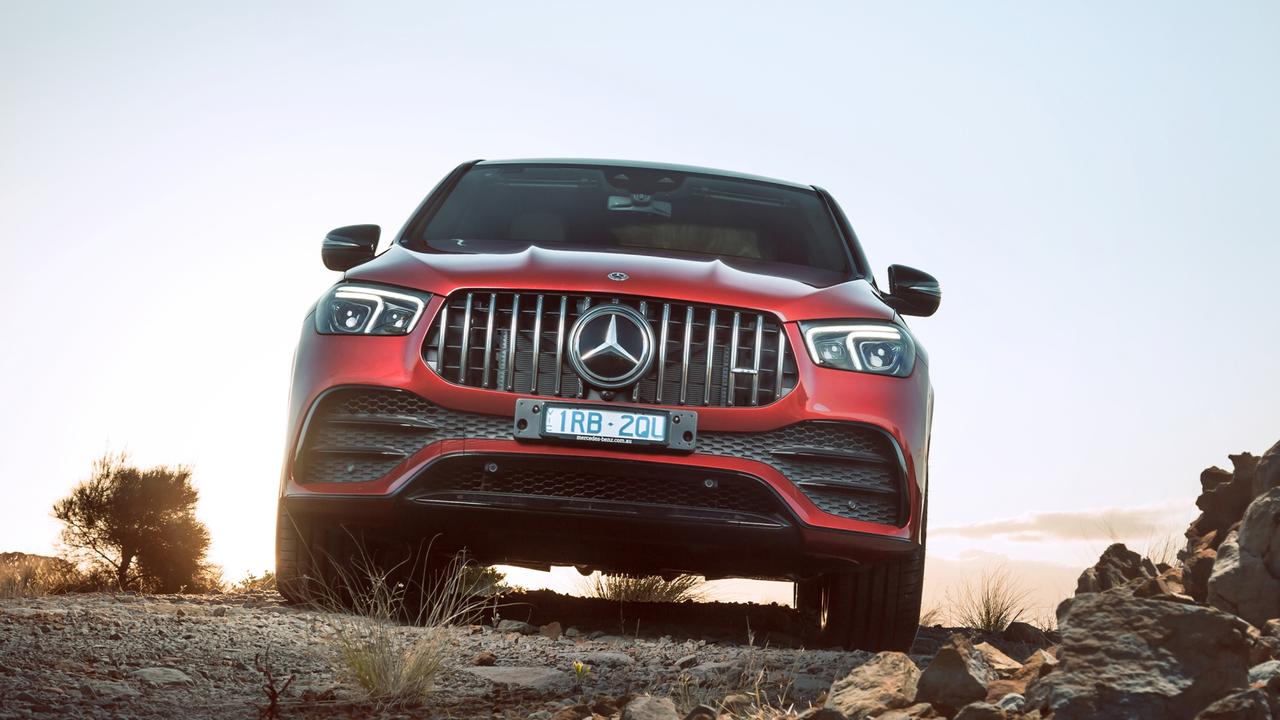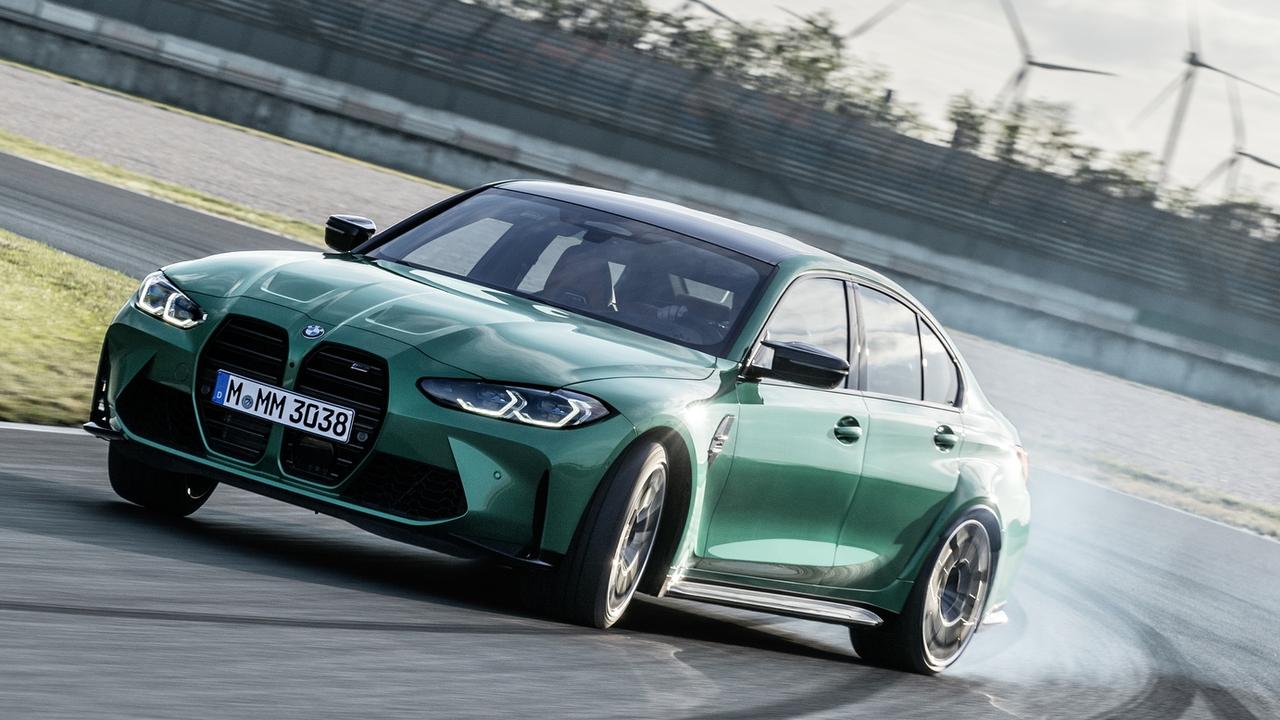New Genesis GV80 SUV review: The $100,000 question that could make or break the brand
Up and coming luxury brand has a huge task ahead of it to lure customers away from the German car makers. And one all important question will decide its fate.
Luxury
Don't miss out on the headlines from Luxury. Followed categories will be added to My News.
A $100,000 question could make or break Genesis in Australia: How do you persuade customers to forgo established brands to gamble on an unknown luxury SUV?
Design and technology are the answers advanced by the new Genesis GV80, a late arrival to counter the likes of BMW’s X5.
Albert Biermann, former BMW executive turned research and development chief for Hyundai’s luxury brand, says design is the No.1 priority for Genesis. It’s why the GV80 has classic long-bonnet proportions, enormous 22-inch wheels and four glowing blades of LED light front and rear.
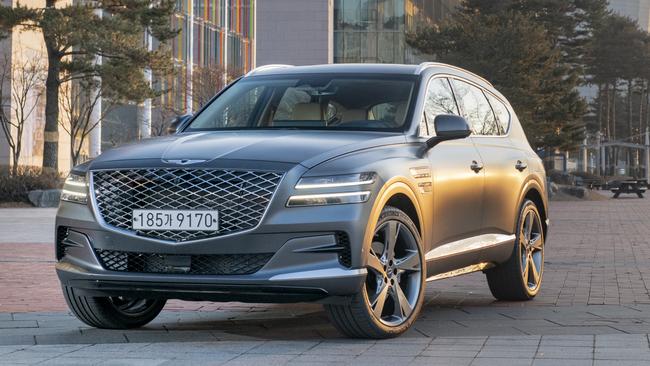
Design boss Luc Donkerwolke won boardroom battles to drive Genesis away from its generically anonymous past and establish a new look.
The cabin is beautifully finished and lined with premium leather, open-pore wood and knurled metal-effect touchpoints, inspired by the likes of Bentley’s Bentayga. There’s a dash of Range Rover in the climate control, with a mix of physical buttons and haptic touch controls.
Its 14.5-inch widescreen touch display is accessed through a rotary controller with a fixed touch-sensitive glass centre and spinning outer ring bucking the trend for iPad-like displays.
Conventional satnav joins an augmented reality screen that superimposes graphics over a live video feed of the road ahead. Active noise suppression complements mood audio such as the sound of a crackling fireplace, soft rainfall or the murmur of a busy cafe.
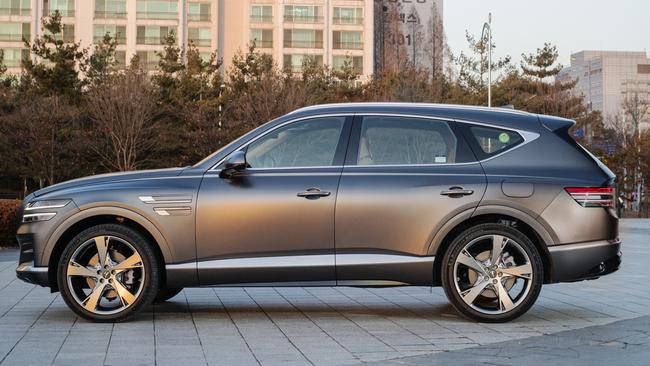
Further tech shows in the digital dashboard with a hologram-like layered 3D effect.
A camera scans the road ahead before adjusting active suspension to prepare for bumps. Air pockets in the massaging driver’s seat balance the body load across its surface, subtly changing shape over the course of a journey to reduce stiffness.
Space in the second row is adequate if not outstanding and the power folding third row is best left to kids.
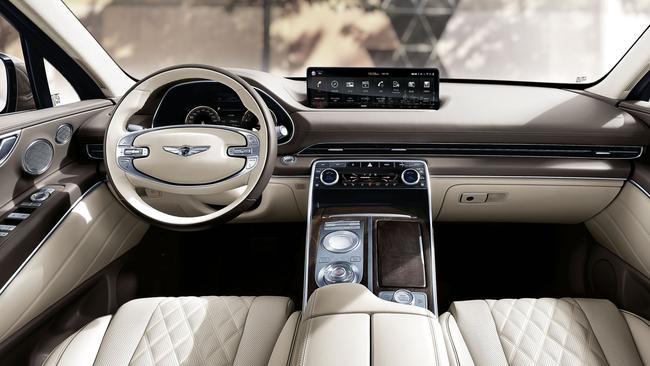
The 10 airbags includes a centre curtain positioned between the driver and passenger and the suite of driver aids is appropriately comprehensive — autonomous emergency braking and blind spot monitoring are abetted by advanced steering assistance and a new type of active cruise control that adapts to your driving behaviour.
You can instruct the cruise to be more aggressive when accelerating or braking, and leave a smaller gap to the car in front to discourage people from cutting into line.
Power comes from a new 3.0-litre in-line six-cylinder turbo diesel certain to find its way into other Hyundai and Kia models.
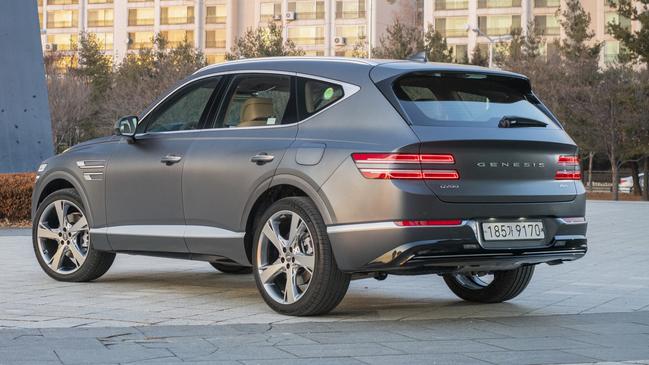
Its healthy outputs — 205kW and 588Nm — translate to adequate if not excessive punch and sub-10L/100km real-world fuel economy. More impressive is the motor’s whisper quiet and tremor-free refinement.
The diesel will be joined by 2.0-litre four-cylinder and 3.5-litre V6 turbo petrol engines in local showrooms.
Hyundai’s smooth eight-speed auto wasn’t troubled by urban and motorway running. The GV80 rides on a new platform and is available with rear or all-wheel drive.
Our brief steer suggests the refinement of the GV80 is comparable to class leaders. It’s quiet on the road, with a comfortable ride on smooth Seoul tarmac thanks to steel springs with adaptive dampers.
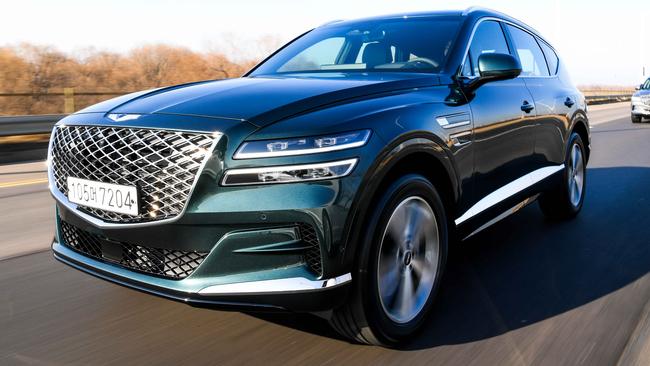
Australian models will have bespoke suspension to suit our broken surfaces while catering to the local preference for composure over comfort on country roads.
We don’t know exactly how much the Genesis will cost in Australia, though you can expect it to undercut the sub-$100,000 ask of entry-level European alternatives. Impressive as the GV80 is, it will need to have an attractive sticker.
Five years on from the introduction of the first Hyundai Genesis sedan in 2014, Genesis sold just five cars in December 2019. The brand introduced a flagship studio in Sydney to house its G70 and G80 sedans in 2019 but buyers aren’t biting.
Further investment in dealerships and a broader model range will help address that — but only customers can answer the $100,000 question.
Originally published as New Genesis GV80 SUV review: The $100,000 question that could make or break the brand


